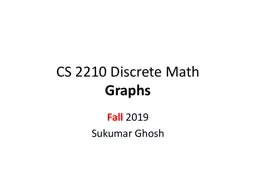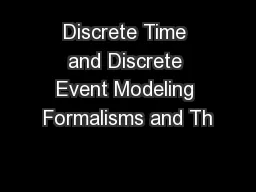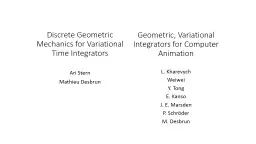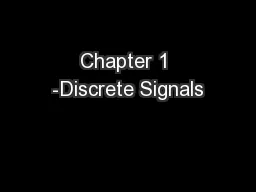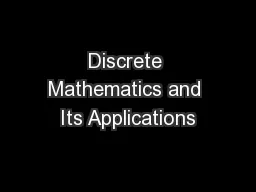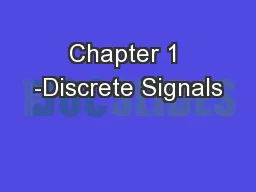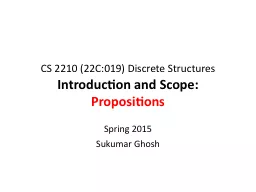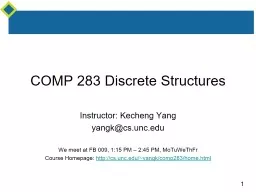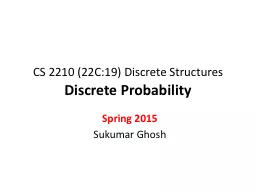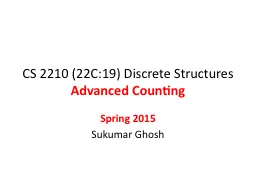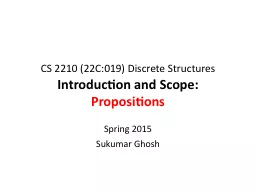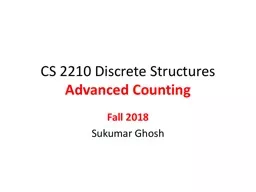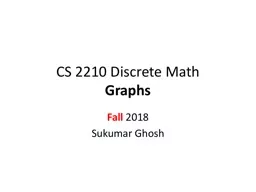PPT-CS 2210 Discrete Math
Author : mitsue-stanley | Published Date : 2019-12-12
CS 2210 Discrete Math Graphs Fall 2019 Sukumar Ghosh Seven Bridges of K nigsberg Is it possible to walk along a route that cross each bridge exactly once Seven
Presentation Embed Code
Download Presentation
Download Presentation The PPT/PDF document "CS 2210 Discrete Math" is the property of its rightful owner. Permission is granted to download and print the materials on this website for personal, non-commercial use only, and to display it on your personal computer provided you do not modify the materials and that you retain all copyright notices contained in the materials. By downloading content from our website, you accept the terms of this agreement.
CS 2210 Discrete Math: Transcript
Download Rules Of Document
"CS 2210 Discrete Math"The content belongs to its owner. You may download and print it for personal use, without modification, and keep all copyright notices. By downloading, you agree to these terms.
Related Documents

